Yoda: Yes, a Jedi's strength flows from the Force. But beware of the dark side. Anger, fear, aggression; the dark side of the Force are they. Easily they flow, quick to join you in a fight. If once you start down the dark path, forever will it dominate your destiny, consume you it will, as it did Obi-Wan's apprentice.
Luke: Vader… Is the dark side stronger?
Yoda: No, no, no. Quicker, easier, more seductive.
Luke: But how am I to know the good side from the bad?
Yoda: You will know... when you are calm, at peace, passive. A Jedi uses the Force for knowledge and defense, NEVER for attack.
Luke: But tell me why I can't...
Yoda: No, no! There is no "why".
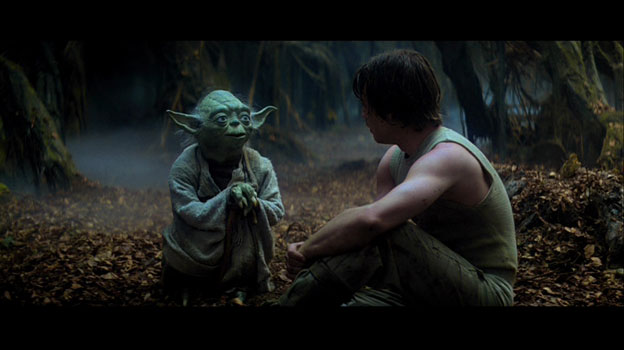
Yoda was not willing to explain to Skywalker that the greatest battle he would perform would be with himself. Those gifted with control of the Force would have to be ever vigilant as to which side they wanted to remain on. The dark side was the easier path but would ultimately corrupt every user that tried to master it. A variation of that theme was explored in martial arts storytelling. When that myth was introduced into Street Fighter the balance between good and evil, right and wrong could be clearly seen by arcade players. It was not done in the first or second games but in the third, which was actually a prequel named Street Fighter Zero in Japan and Alpha in the USA.
Ryu and his techniques were like the good side of the force, wise, patient and understanding. He wore all white, a color used to symbolize purity and life. He was perpetually young and handsome. By comparison Gouki was the ambassador of evil. His features twisted and grotesque. He wore all-black, symbolizing the impure and death. Both of them actually practiced the same form of fighting, a Karate / Kung-Fu variation known as Ansatsuken or the "Assassin's Fist." The form learned by Ryu and his friend Ken was handed down to him by his master Gouken. The Chinese Goutetsu had refined the lethal style into a powerful form of fighting and took it to Japan. He tried to keep the killing strikes a secret from his students Gouken and Gouki. But as most gamers know he failed at that when Gouki went on a murder spree and killed his master and brother using the dark techniques.
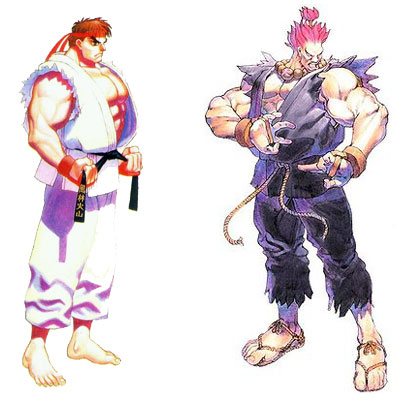
The relationship between Ryu and Gouki was very much like that of Skywalker and Vader. The master of evil seemed too powerful to be defeated. Vader had killed Obi-Wan Kenobi in front of Skywalker just as Gouki had killed Gouken in front of Ryu, The fears for the young martial arts master were palpable because both villains were so well presented in their given titles. Whenever Gouki appeared in the game series a little bit of that fear and intimidation was passed onto new players. Capcom had done as good a job defining their villain as George Lucas had done for Vader.
The final trial for the young Jedi was something that Skywalker could only face by himself. Yoda would not be able to guide him but had to hope that he had taught Skywalker enough to carry him through his own path. This was symbolized in the film series by a battle that Skywalker had against an image of Vader. The two had a Lightsaber duel in a dream-like sequence. Skywalker conquered his fears and managed to gain the upper hand in the contest. He struck down Vader by decapitating him. The next portion was something that haunted Skywalker and audiences for the rest of the film. The mask of Vader blew up and his face was revealed. Behind a puff of smoke Skywalker ended up looking down at himself. This was foreshadowing the big reveal at the end of the film but was also meant to be a warning against the corruptive influence that the Force had.
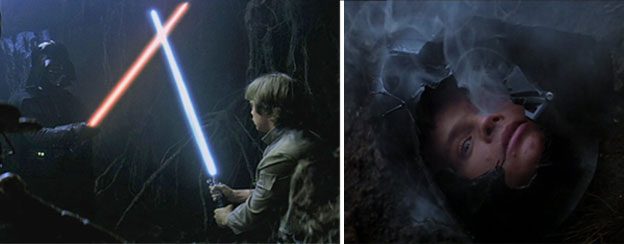
Ryu had a similar crisis of conscience in Street Fighter Zero. He was not worried that Gouki might be his father, although many gamers had speculated that he may have been. Instead Ryu was worried that all the lethal strikes in his fighting style may begin to overpower his self control. The Dark Hadou was like the Dark Side of the Force. If Ryu set down the path of learning all the killing strikes then it would consume him. Ryu was finding it more and more difficult to maintain his composure during battles, especially after he had defeated Sagat in Thailand. What he failed to acknowledge was that he had used a killing strike in order to defeat Sagat in the original Street Fighter. Ryu would not have won the fight under normal circumstances. Sagat was fighting with everything he had, he was doing so knowing that the battle could very well kill him. Ryu was young and lacked the experience to realize what he had gotten himself into. The only way to stop Sagat was with a lethal blow. That was something that master Gouken had forbidden him from performing in battle. In a moment of weakness or rage depending on your interpretation, Ryu succumbed to his Dark Hadou. Even if it was only for a moment Ryu was not himself, he became somebody else. The Shin-Shoryuken or True Dragon Punch would have killed a lesser fighter. Sagat was so large and powerful that he managed to survive the punch but was left with a massive scar burned across his chest.
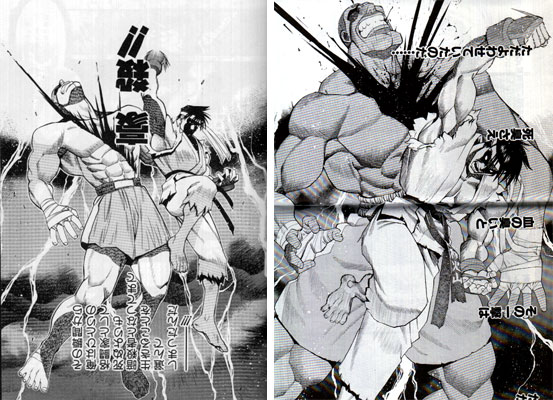
By exposing himself to the lethal elements Ryu had tapped into the Dark Hadou. That one act had begun to poison his soul and would slowly try to consume his body. If he were willing to disregard his training and value for human life then perhaps he had what it took to become a master of the Dark Hadou. Unfortunately this would mean that he would have to kill Gouki to truly claim this status. Ryu in his innocent "good guy" form seemed incapable of standing up to Gouki. With the newfound dark techniques he looked like a decent rival. This was the heart of the material that Capcom had created when they introduced Evil Ryu into Street Fighter Zero. The studio even gave him the Ashura Senkuu a familiar "teleport" move and Shun Goku Satsu to make him appear like the understudy of Gouki. This change to the character and canon excited players.
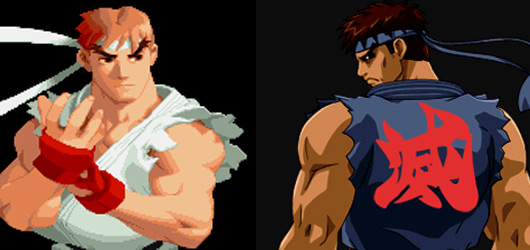
Although gamers were aware of the outcome of that storyline they were still surprised at the turn of events that Capcom had created. The story of Zero took place between the first and second Street Fighter Tournaments. In Street Fighter II Ryu was the pure hero and Gouki was the dark villain. Apparently Ryu had overcome the Dark Hadou and would never need to tap into it again. However for each of the Zero sequels (there were three games in all) the future of Ryu was in constant jeopardy. Several of the characters he crossed paths with tried to help him stay on the good side. Several of the villains tried to pull out his dark tendencies. Like Skywalker however this was a fight that Ryu could only face himself.
The best part for gamers was that they could play as Ryu or Evil Ryu in the game. They were allowed to explore the canon as if it were written for a villain rather than a hero. This was something that the movie-watching experience could have never accomplished. Imagine two cuts of the Empire Strikes Back, one that audiences knew and one where Luke turned against Yoda and joined Vader. George Lucas and Irvin Kershner had a hard enough time conceiving and directing the second film in the trilogy without having to worry about filming two concurrent story lines. The battle between good and evil, right and wrong and even the self was solid enough that it only had to be filmed once for the series. Of course fighting game fans would be at a loss if they were not allowed to pit good guys against other good guys and bad guys against other bad guys. The best possible scenario for the canon of SF was to allow gamers to have Ryu battle his own evil half. The stages where the fights between good and evil took place had developed a personality all their own. They helped place the gamer in the scene and made the struggle against dark and light forces have more of an impact. The next blog will look at these locations. As always if you enjoyed this blog and would like to sponsor me please visit my Patreon page and consider donating each month, even as little as $1 would help make better blogs and even podcasts!

No comments:
Post a Comment